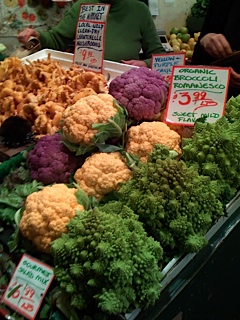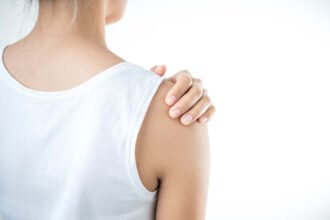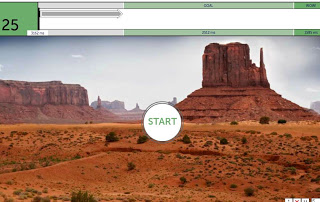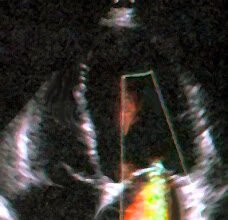“Let food be thy medicine, and medicine be thy food.” — attributed to Hippocrates – around 400 BC
“The doctor of the future will give no medicine but will interest his patients in the care of the human frame, in diet and in the cause and prevention of disease” – attributed to Thomas Edison – around 1902
She was raised in her dad’s store, a store that sold vitamins and supplements. She never once saw a physician growing up, but had weekly chiropractic adjustments. When she had her children she had to fight the school district because she refused to have them vaccinated.
“Let food be thy medicine, and medicine be thy food.” — attributed to Hippocrates – around 400 BC
“The doctor of the future will give no medicine but will interest his patients in the care of the human frame, in diet and in the cause and prevention of disease” – attributed to Thomas Edison – around 1902
She was raised in her dad’s store, a store that sold vitamins and supplements. She never once saw a physician growing up, but had weekly chiropractic adjustments. When she had her children she had to fight the school district because she refused to have them vaccinated.
When she got to my office she had a large mass on her neck that was obvious from twenty feet away. She was gasping for breath, to the point where I brought her straight from my clinic to the operating room to intubate her and keep her from dying of asphyxiation on the spot. I then removed the mass. It was Hodgkins Lymphoma.
The pathologist told us that it was a good type to have. We did some scans of her abdomen and chest, and she didn’t appear to have disease outside the area that I resected. The oncologist recommended some simple treatment which included a bit of radiation therapy to the area and some chemotherapy. She refused.
A mother of four children, and barely 25 herself, she said she would trust her chiropractor, and wanted what was natural. Her husband, father, and mother all nodded in agreement. They thanked me for saving her life, but were going to explore their cancer treatment with their chiropractor, whose name – oddly enough, was Dr. Sew.
A week later they were in my office, cramped with the group. They were excited about going to Mexico, Tijuana to be exact, so she could start Gerson therapy. I had no idea what it was, so they opened the brochure and showed it to me. It involved juicing, something she had done her entire life, but 13 glasses a day of carrots, and other things. It also involved coffee enemas, as well as ingredients designed to maker her sodium level low.
I asked why she thought this was better than what my colleagues had offered. “This is natural, and it cures people. Look at the testimonials here. Plus, Dr. Sew knows this treatment, says it is the best. Look it has laetrile too!”
I looked at them all – excited to go to Mexico, excited to start the journey, a validation of their beliefs.
“I’m sorry, but I have to tell you that I think this is a mistake,” I said. “You have a cancer that may even be cured by what we did, but certainly can be cured with a bit of therapy my colleagues offer. Its proven, it works. You are young, why not do this therapy, then if you want go to Mexico.”
Her father, Big Al, put his hand on my shoulder, “You know, I’ve haven’t known you a long time. I can’t tell you how much we appreciate what you did for our daughter. But you just don’t know nutrition. These guys have great results, and we trust them like we trust you. Your colleagues, they just want to burn it with radiation and poison it with chemo. Gerson’s therapy will boost her immune system.”
I had been in his store, even bought a juicer from him and was trying to enjoy carrots in a new way. Big Al was a salt of the earth type of fellow who would give you the shirt off his back. A big man, when he shook your hand you felt your hand being swallowed in his – but he never shook it too hard, just right. Why he liked me and not my colleagues, I could never tell. But I also knew that they were going to Mexico, and I wanted to not burn a bridge if they came back and needed my help.
It wasn’t cheap, several thousand dollars for juice, enemas, and injections. They were not rich. She cared for her four kids, her husband worked hard as a contractor, and the family all chipped in resources so she could get her treatment. They had their tickets to San Diego. They would be met at the airport by a van and taken across the border.
A week later I got a postcard from them. The postcard was a bullring in Tijuana, and the note said, “Doc, I feel better already, I didn’t know how tired I was. I can’t wait to knock this cancer out. ” I put the postcard down and my nurse came into my office to tell me a hospital in San Diego was on the phone.”
The doctor on the other end was curt. “Your patient is here with camplobacter sepsis from injections at the center in Tijauana. Why did you send her to that place?”
I explained that I didn’t, but asked him to tell me what was going on. He said that she was sick, and her family asked to call me and if she could be transferred back.
The injections she received were infected with a bacteria commonly found in American turkeys, where they may have gotten the liver to inject into the patients. In addition to having a bad infection her blood chemistries were off as a result of the coffee enemas combined with the other therapy she was getting.
I told him we would be happy to get her back home, I would take her on my service. He said she was pretty sick and it might be a few days. As I talked to him he told me that this was not the first patient he had seen with this. He was an infectious disease doctor, and had seen several cases, and gave me the reference that the CDC reported.
“They come to this clinic, but when they get sick the van drives them across the border and drops them off at the airport. She, like many, was just too sick. As soon as they crossed the border the driver called 911 and left her at the Jack-in-The-Box.”
Several days later she was well enough to be transferred back, and I visited with her in the hospital. She didn’t blame the clinic, although her dad, Al, was furious. She was being treated, while he and the rest were relaxing at the beach in San Diego. “I would have come down there and picked her up, they didn’t need to drop her off. ” A big man who is angry is a bit frightening.
Two weeks later they were on their way back to Tijuana. “I’m done with those injections,” she said, “But I wasn’t done with the therapy.” Big Al drove her back, stayed with her the entire time, and they sent me another postcard. This one was “From where the Margareta was Invented.” “Doc, I feel so much better than ever, I’ve got energy. This cancer is licked! Bringing you back some Tequila (they won’t let me drink it). ”
It was a year later when she came back into my clinic. At five foot four inches, she now weighed less than 80 pounds. She was breathing hard, looked yellow, and said, “I wonder if something is in my neck again, I can’t catch my breath.”
I put her in a wheelchair and walked her to the hospital where we placed her in the ICU. She felt better with oxygen, but a chest scan, followed by CAT scan showed several large masses in her chest, her liver, and large lymph nodes all throughout her chest and abdomen. It was either her original cancer, or some variant of it, and it was back, choking the life out of her. She improved a bit, but the oncologist wanted some tissue to confirm it. Examining her I felt a lot of cancerous feeling lymph nodes in her armpit.
I biopsied those and it came back lymphoma, not Hodgkin’s disease. The oncologist said, “sometimes they change into something worse, and that looks like what happened.”
This time it wasn’t going to be easy, and I dreaded the conversation. Her new oncologist (she fired the old one) asked me to come with him as he would explain the treatment he would suggest.
It was a new treatment, made with some monoclonal antibodies. Easier on her. He explained it to her exactly right “Its boosting your immune system. We are not poisoning the cancer, just helping your cells get rid of it.”
She looked at me as if asking for my advice, I silently nodded.
In a week she was out of the hospital. Two weeks later the remaining lymph nodes in her arm could no longer be felt. CT scans showed a reduction in the mass.
Years later, I was in my office when a new PA student arrived , “You don’t remember me, do you?” I didn’t. “You helped my mom.” I had not heard from her in years. Here was her son, the youngest of the lot, having finished college and now on clinical rotations to be a PA.
“Mom sent you this.”
I opened the box. It was a bottle of tequila with a note: “Take care of my boy like you took care of me. If it were not for you I would have never lived to see my kids graduate from college. Yes, this is the original bottle I got you, I don’t know if it is any good. Just so you know, I only drink my coffee now, Stephen will explain.”
Stephen told me how when his oldest brother, named after his grandpa , Al got home from college one summer he got a summer job with Dr. Sew. Al asked about the people he referred to the Gerson clinic. Al got the charts of all 12 of those people and started to call them. Al came home one day in tears, turned out his mom was the only one who was still alive, all the rest had died within a year, from cancer. The family sat down together that day, and decided to learn more about the “complicated stuff.”
Stephen said, “After that happened grandpa said the best place to be when you are sick is in the hospital.” He sold his Vitamin shop, retired, and started telling his grandkids to keep getting educated.
Every one of those four kids got a scholarship, and went to school. All big boys, got athletic scholarships. Stephen told me how they all were All-Americans in school, with A averages, and not in “fluff” subjects — all of them science. All pushed by a mom and grandpa who wanted them to know how to think. Now in my clinic was the last one.
Food as a cure for all diseases, or as a cure for some: the United States has a long history of nutritional pitchmen who advocate that food, in one form or another, will cure cancer, heart disease, Alzheimer’s, and a host of other problems.
It started with Graham, of the cracker, went to Kellogg and Post, of cereal fame. They thought cures for disease came in being vegetarian, enemas, and some other ideas. Ironic that their food products are now considered junk food.
Gerson was another one, who built that complicated regimen for headaches, and felt it was a cure all for many diseases. His clinic isn’t run by him, he died in 1959, but by his daughter, who is not a physician.
If you run into his disciples they will tell you how the “government” doesn’t want people to get well, that we doctors are tools of “Big Pharma” and we are in the sick business. What they won’t tell you is that of the seven publications about a therapy that has been around for over 60 years, none of them meet the basic standard of evidence – and all are flawed. They don’t know that the Gerson clinic doesn’t follow up on its “patients” and that when follow up has been done, as by Al, or published by a naturopathic physician, the results are horrible. No, what they will do is show you a slick brochure, or DVD, or website and instead of believing scientists they believe a brochure.
Isn’t it odd- they won’t believe science, where we test things, but will believe a slick brochure from a clinic operating outside the borders of the US. Steve McQueen went there, died of his cancer shortly after, so did comedian Pat Paulson. And a host of others.
It would be nice if drinking vegetable juice worked, or taking coffee enemas (they won’t let you drink it, but think there is magic in shoving it into the rectum). Maybe because they want to believe it so they ignore the data.
Like every pitchman before them, selling simplicity “its natural, it works” against science – or as Big Al called it “the complicated stuff.” When I asked Stephen what Big Al meant he said, “Grandpa knew he wasn’t educated, but he tried, and he believed the stuff he was sent by everyone who sold vitamins or natural cures. He was well read with the material. He tried to read a biochemistry textbook to learn more, and though it was beyond him, but he kept it in his shop. He somehow thought that he was missing something. When my brother came back and started to tell grandpa about the scientific method, testing a theory, he realized that the answer might be in that complicated stuff.”
It turned out in his retirement Big Al went to a community college and started to take biology and chemistry. He didn’t do it for a degree, he did it to learn “the complicated stuff,” but I suspect he also did it to show his grandsons that learning was serious stuff. His two favorite classes were biochemistry and physiology.
Stephen did a good job on his rotation with me. He is now working in a cancer hospital telling his story to patients who want to learn more about “alternative therapy.” He has a sensitive way of helping people through the process, and I am sure that hospital is happy to have him.
I suspect many people want the simple answer to cancer, and don’t want to learn the “complicated stuff.” It is easier to blame Big Pharma than it is to learn what it all means. Sadly it means they will spend a lot of money on pitchmen that don’t cure cancer, just relieve your wallet.
For Those who Want the Complicated Stuff – here are some References:
1. American Cancer Society. Unproven methods of cancer management: Gerson method. CA—A Cancer Journal for Clinicians 40:252-256, 1990.
2. Green S. A critique of the rationale for cancer treatment with coffee enemas and diet. JAMA 268:3224-3227, 1992.
3. Ginsberg MM and others. Campylobacter sepsis associated with “nutritional therapy”—California. MMWR 30:294-295, 1981.
4. Lowell J. The Gerson Clinic. Nutrition Forum 3:9-12, 1986. 5. Austin S, Dale EB, DeKadt S. Long-term follow-up of cancer patients using Contreras, Hoxsey and Gerson therapies. Journal of Naturopathic Medicine 5(1):74-76, 1994.








